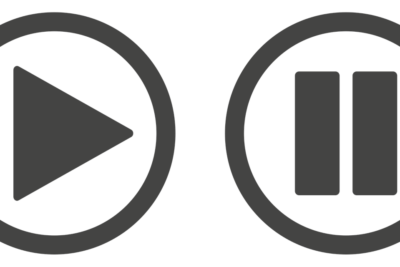An abandoned cart email sequence is an automated series of emails triggered when a shopper leaves a website without purchasing the items in their cart. With customers abandoning more than 7 of every 10 carts, you need to redeem as many as possible.
Here’s why shoppers abandon carts most often:
- Real-life interruptions
- Technical glitches or friction at checkout
- High shipping fees
- Limited payment sources
- Not ready to buy
- Holding out for an incentive
An abandoned-cart email sequence allows you to reach high intent middle-funnel shoppers. They’re more engaged than your top-of-funnel browsers but not as loyal to your brand as repeat buyers.
Abandoned-cart emails cost a fraction of what you would spend on retargeting display ads on social media or other sites. They can answer questions and resolve problems that kept your shoppers from finishing the sale.
Considering that 56% of brands don’t send these reminders, abandoned-cart sequences can give you a competitive edge to snatch a sale away from another brand.
Setting up an abandoned cart email sequence takes more than approving an email in your ESP (email service provider) or switching on an integration with your ecommerce store. You draw on everything you know about your customers and your ecommerce platform to create messages that will resonate with your shoppers.
Thinking through the 10 questions below can help you create or elevate an abandoned cart email strategy and sequences that will nudge your customers to finish what they started.
1. What’s the best time to send an abandoned cart email?
As close to the abandonment as possible without making your customers feel as if Big Brother is watching them. Testing will show you when your customers are most likely to complete checkout — but if you don’t have the time or ability to test, then start by sending your first email within 1 to 24 hours after abandonment and tracking responses.
2. How many abandoned cart emails should I send?
Many brands in the MailCharts database send two to three emails in their sequences, although some send seven or even more. (These Running brands average 3 cart abandoner series emails.)
There’s no magic number of emails that will nudge customers to buy their items. Many email experts say you should send three emails, but it depends on how your customers shop and why they abandon. Test different combinations — two, three, or four emails in a sequence — to learn how long it takes to get the conversion.
If you sell high-priced items that have a longer purchase journey, you might need to nurture your customers with emails that help them feel more confident about buying. (See question 4 below.)
Someone who had to break off the checkout process because they got interrupted, had a glitch, or moved from a phone to a computer might need just one. Also, consider sending follow-up emails only to people who opened but didn’t convert from the first or second message.
3. Should I send the same email every time?
No. Each email has a different approach to persuading customers to come back and check out. Here’s a classic scenario that you can test and tweak to fit your own needs:
- Email 1: Ask if they had a problem checking out (technical glitch, an item ended up on backorder or sold out, pay denial, coupons that didn’t work), and highlight tech or customer support contact information.
- Email 2: Remind customers about how long you retain carts. Point customers toward FAQs that can answer lingering questions about buying the right products.
- Email 3: Add urgency and include an incentive if necessary. (See Question 5 below.)
4. How often should I send an email in my abandoned cart email sequence?
Figuring out your abandoned-cart email cadence depends on many factors: what you sell, how your customers shop, and what motivates them to buy. Studying a brand’s abandoned cart sequence in MailCharts shows you the intervals at which brands send their emails.
If you’re just getting started, test this three-email sequence by sending:
- Email 1 within a day of abandoning
- Email 2 up to 48 hours after Email 1
- Email 3 within 72 hours after Email 2
That gives you a 6-day email journey.
Tip: Find out if your automation can verify that your customers bought their items before the next email goes out. The lag time in reporting means you could be sending reminders to customers who’ve already bought — and that is why nearly 1 in 4 email subscribers opt-out of marketing messages.
5. What should I include in my abandoned cart sequence emails?
The more information you provide, the more you can guide customers to buy. Each email should have this basic information:
- Personalization showing the shopper’s name and list of abandoned items, including price, description, and quantity
- Any incentive (new customer discount, abandonment incentive, email discount or offer, etc.)
- High-quality color images displayed alongside product information
- Link to the cart (never drop shoppers back onto the homepage instead of a relevant interior page!)
- Return/exchange policies
- Contact information for customer support (phone numbers, hours, email, or web link to forms)
A couple of nice-to-haves include listings of related products (“Customers also browsed these products”) and FAQs with additional information to help shoppers make sure they’re buying the right products.
6. Is an abandoned cart sequence transactional or promotional?
They are considered transactional emails under most email laws (CAN-SPAM in the U.S., CASL in Canada, and the GDPR in European Union countries), provided the cart-related content is listed first and makes up the major part of the email.
7. Should I add a discount to my abandoned cart sequence?
Sure, if that’s what it takes to sell the cart. However, customers can get strategic about abandoning carts if they know the brand will include a deal-sweetener. If you send a discount right away, you could lose money on people who were going to buy even without it.
With a multiple-email sequence, you can wait until the last email to include a discount, like a percentage/cash reduction, or an incentive like free shipping.
The abandoned-cart sequences in the MailCharts database show which brands use incentives or discounts, when they send them in the abandonment sequence and how large they are. Use that data to give you a starting point, and then test to see how effective it is.
8. How can I get better results from my abandoned-cart emails?
These steps can help you elevate your cart abandon sequence from good to great:
- Add another email to the sequence, especially if you’re currently sending just one email
- Add a phone number in your final email that goes to an escalated level at your call center, bypassing the automated operator
- Add more products or buying information if you don’t include it now
- Add product ratings or customer reviews to the products for which you have that data. People buy from people and on other people’s recommendations
- Let customers know how long their items will remain in their carts, and send an email just before the cart expires
9. Do abandoned-cart emails work?
Yes! According to a Klaviyo study, cart abandon emails generate an average of $5.81 per recipient. They have a global average 41% percent open rate and 8.4% conversion rate, roughly 4X the usual retail benchmarks.
In Mailchimp’s study of its retail customers that had connected their ecommerce operations with the platform provider, it found their shoppers abandoned 69% of carts, but abandoned cart email sequences brought in an average 34 times more orders than regular promotional emails.
10. What kind of subject line and from name should I use?
Choose these identifiers as carefully as you do on all the other emails you send. The from name, which identifies the sender, should be clear that the email is coming from a brand. Never use an email address instead of a brand name or department like “X Company Customer Service.”
Tell your customer right in the subject line about what’s in your abandonment email. Don’t make them guess or use a generic line. If you need inspiration, the MailCharts collection of cart abandon sequences shows you which subject lines a brand uses in their emails.
How MailCharts helps you plan your abandoned-cart sequences
Use MailCharts data to figure out the abandoned-cart strategies your competition is using — everything from timing, frequency, and cadence to content, discounts, and incentives.
Our cart abandonment email examples page has a long list of examples, strategies, and tactics. As a MailCharts user, you’ll have free access to the 189-email curated list and Pro users have access to all 4,634 abandoned-cart email sequences.
Search by individual brands or curated industry groups like Accessories, Apparel, Sports & Activities and Footwear to see how your brand compares with your competitors or how top brands in your industry manage content, frequency, cadence, and discounts/incentives.
In the image below, you see high-level journeys data from brands in the Apparel industry group, including the date range and duration of the sequence, how many emails were sent and time between emails, along with thumbnails of all images in the sequence.
When you click on a brand, you get a close-up view of the emails. These examples from Volcom shows the brand’s abandoned-cart sequence consists of two emails, sent 15 1/2 hours apart, and varies the subject line, hero image, and message tone from the first to the last email:
Abandoned cart journeys are just the beginning
From Accessories to Toys, Eyewear to Footwear, our Pro plans draw on the exhaustive MailCharts Index of email marketing data to guide you to inspiring cart abandonment, browse abandonment, purchase, onboarding and other journeys in over 50 industries. Not ready to go Pro? Sign up for a free MailCharts account and get acquainted with our latest curated holiday lists, featured journeys, industry benchmarks and more.
Editorial Photo by Henrik Dønnestad on Unsplash









